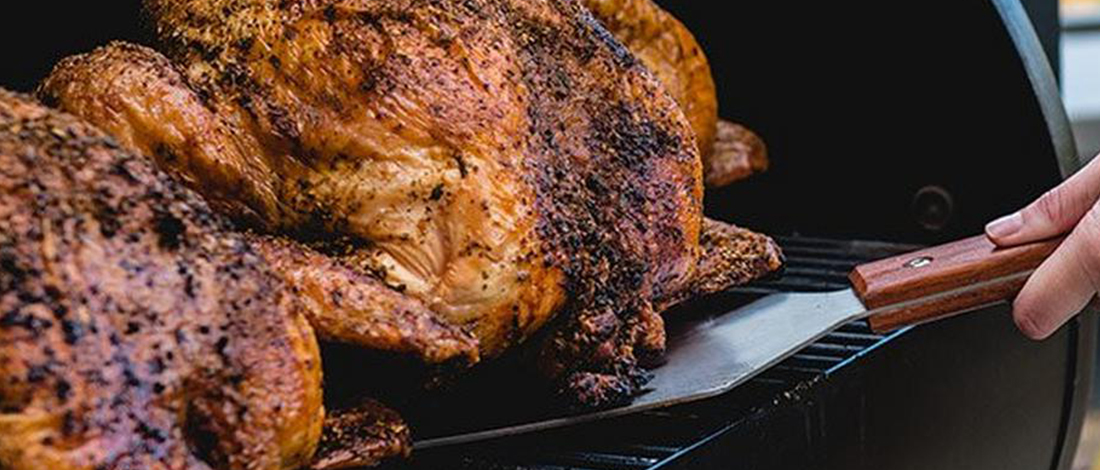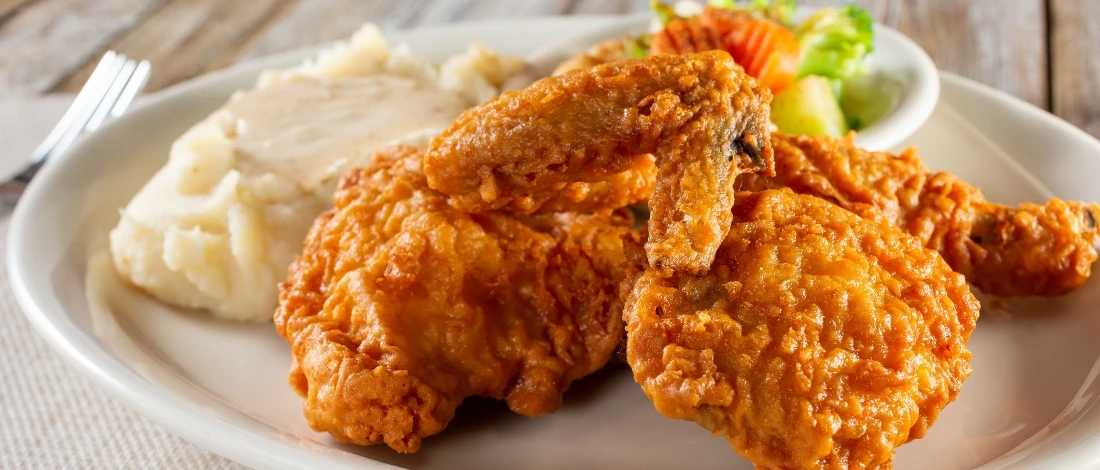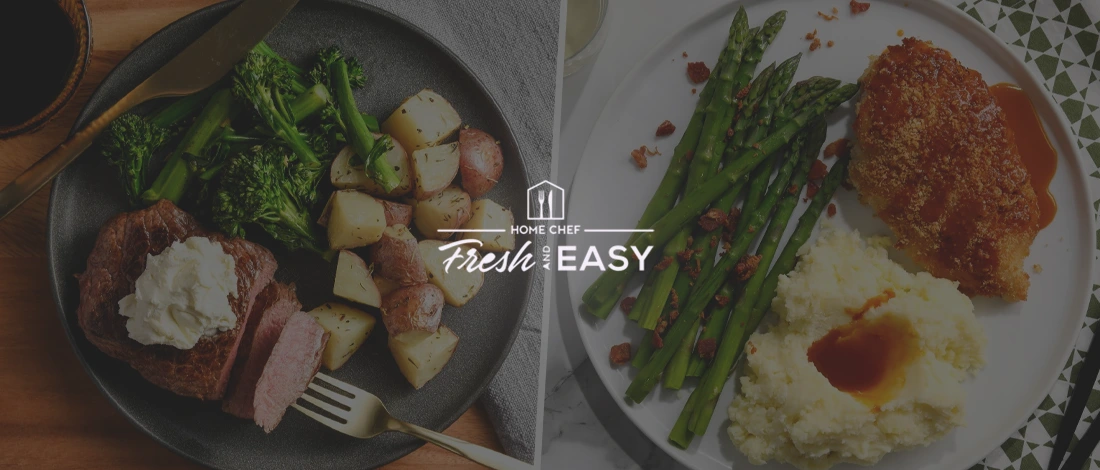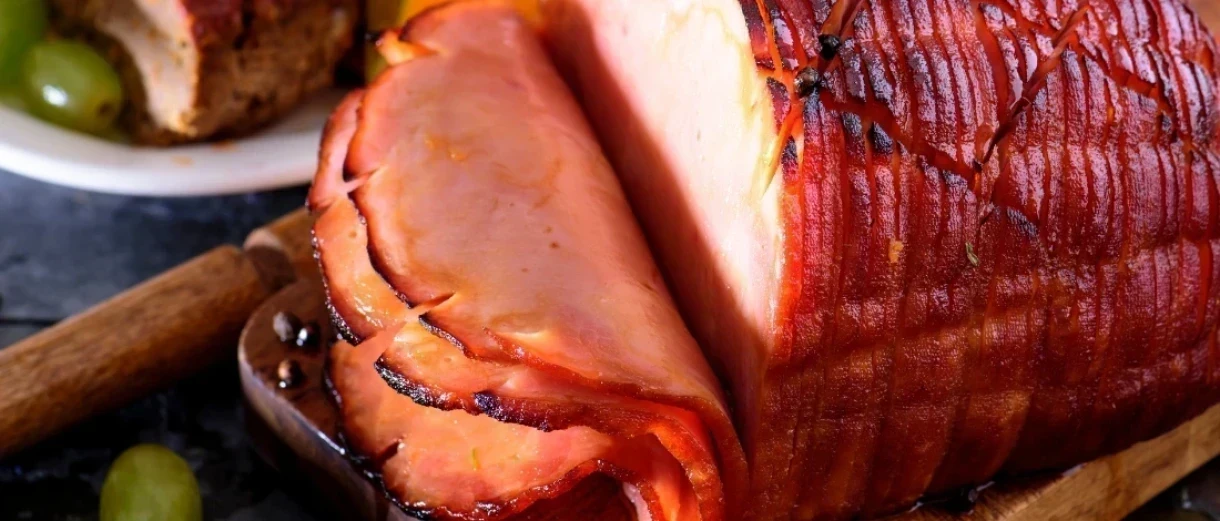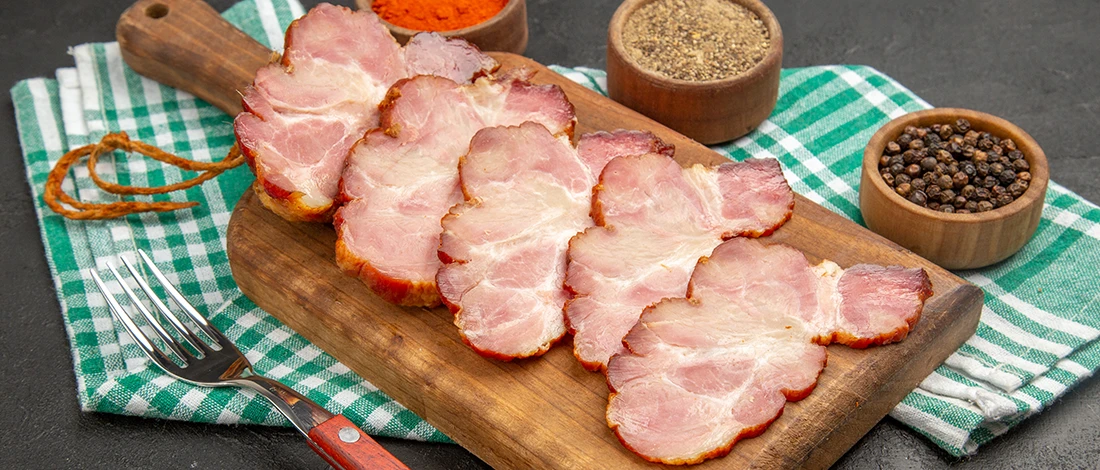While we all love a good sausage or crispy bacon, there isn’t much that compares to a slice of succulent, smoked fresh ham.
Raw ham, also referred to as green ham, goes through a slow cooking process, resulting in incredibly tender, smoky meat.
While it does take some practice to get right, it is possible to achieve great results in a few simple steps.
In this article, I’ve put together a guide to smoke a fresh ham, curing raw ham, as well as some tips and tricks to ensure the tastiest results possible.
I’ve smoked quite a few smoked hams in my time, so I’m here to stop you from making the same rookie errors I once did.
So, if you want to learn the best way to smoke ham, keep on reading.
Quick Summary
- Smoking a fresh ham involves selecting the right cut, curing it if desired, and following a slow cooking process to achieve tender, smoky meat.
- The process includes preparing the ham with a brine or dry rub, smoking it with wood chips like cherry or apple wood, and maintaining a temperature of 225 degrees Fahrenheit.
- A 1993 study published in the National Library of Medicine on polycyclic aromatic hydrocarbons (PAHs) in smoked food products, including ham, found total PAH concentrations ranging from 2.6 micrograms/kg in cooked ham to 29.8 micrograms/kg in grilled pork chops [1].
- The size of the ham determines the cooking time, typically 20 minutes per pound, and basting with pineapple juice and brown sugar glaze adds a caramelized crust and flavor.
Choosing the Best Ham
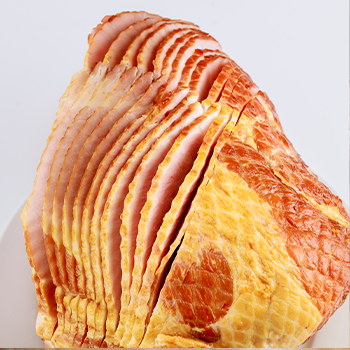
Before we begin the smoked ham process, we first have to ensure we pick the best cut.
This will come from the leg of the pig and will be boneless. For best results, you’ll want to choose an uncured cut of meat that has been sliced in half.
The whole ham is sold in two portions: the shank and the butt.
The shank is usually cheaper since it contains a large bone, but it has more meat than the butt. The best ham for smoking will come from the butt since it is boneless.
If you shop at your local supermarket, chances are the cut will be smoked or cured beforehand. That’s why it’s a good idea to take a trip to the butchers as you will be able to find a raw cut of ham that you can cure and smoke to your liking.
If you can’t get your hands on raw ham, cured whole or cured half is fine too. This just means you’ll have to skip the curing process, which could sacrifice some flavor.
The size of the ham is also an important aspect. Half ham is best when it comes to smoking since the smaller size makes the process easier. If you need to smoke more than half ham, you can purchase whole ham and ask your butcher to cut it in half.
When choosing your fresh ham, you’ll want to avoid the following:
- Pre-smoked/pre-cooked ham: Since the whole point of smoking ham at home is to produce a flavor suited to us, you’ll want to avoid purchasing pre-smoked ham. It may seem a little obvious, but remember that double-smoking your ham will leave you with less than tasty results.
- Low-sodium: People love ham because it’s salty. This saltiness also helps with smoking a fresh ham since it retains the flavor of the meat. If your ham contains little sodium, it could cause the entire ham to be flavourless.
Curing Raw Ham
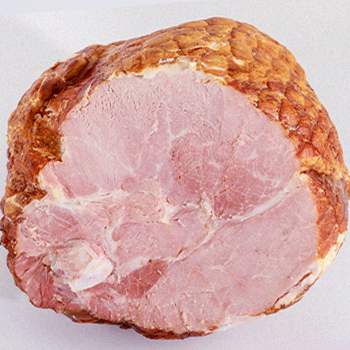
When we talk about curing, this can refer to both dry curing and wet curing. According to an article on Texas A&M University website, most of the time, people will dry cure their meat to preserve the meat for longer [2].
When we smoke a ham or cook ham, we will want to wet cure it.
Don’t worry; wet curing won’t dry the meat out. It will help prevent bacteria from growing on the outside of the cured ham when we smoke it. It also gives the fresh ham a great pink color.
You don’t need to cure your ham before smoking. It does take a long time, and not everyone has the resources to do so.
But, if it is possible for you, I highly recommend it.
Cured ham is the best way to retain all that porky goodness.
To begin the curing process, you first need to whip up a curing brine. Creating the brine itself is quick and easy.
However, curing the ham can take around a week. It sounds like a long process because it is. But believe me, it is definitely worth it in the end.
Brining Fresh Ham for Smoking

To begin the curing process, you’ll first want to create the brine.
Boil a gallon of water in a large saucepan and add the following ingredients:
- 2 cups of brown sugar
- 1 ½ cups of pink curing salt
- ½ cup of apple cider
- ½ cup of pickling spice
- 8 teaspoons of pink salt
This may seem like a lot of salt, but remember that ham should be salty, especially when smoking. This brine can also be used for pork loin cuts.
Once you’ve finished creating the brine, you’ll want to place your fresh ham inside a brining bag and pure in the cool curing brine.
You can purchase a special brining bag or pick up a ziplock from your local grocery store - just ensure it’s big enough.
You can place the bag inside the refrigerator. How long you need to leave your ham depends on how big your ham is.
Typically, for every two pounds of fresh ham, you’ll want to leave it inside the refrigerator for one day.
Things You’ll Need for Smoked Ham

Once you’ve got your fresh ham cured, it’s time for the smoking process. Here is what you will need to smoke a fresh ham:
- A smoker - This can be either an electric smoker, charcoal, or gas - whichever you prefer to use.
- Half fresh ham - As I mentioned before, you can either pick up ham that comes from the butt portion or the shank portion. Stay away from pre-cooked hams.
- Wood chips - To smoke fresh ham, you’ll need to have some wood chips or pellets. These come in many different flavors, so feel free to choose whatever you like. I do recommend cherry wood, apple wood, or hickory when cooking smoked ham for wood chips.
- Dry rub - If you have a favorite dry rub, feel free to use that. Personally, I love a mixture of kosher salt, garlic powder, onion powder, black pepper, chili powder, dried oregano, and dried thyme. This works great on several smoked meat recipes.
- Pineapple juice
- Brown sugar
- Yellow mustard
- Aluminum foil
- Basting brush
- Meat thermometer
I will also share how to inject your ham later on in the recipe. It is optional but I recommend it.
For this you will need:
- 1 cup of water
- ¾ cup of apple juice
- ½ cup of kosher salt
- ½ cup of brown sugar
- ¼ cup of pineapple juice
- 2 tablespoons of Worcestershire sauce
4 Steps to Smoking Fresh Ham
Once you’ve collected everything you need, we can now get started with the process. Here are 4 simple steps on how to smoke a fresh ham.
Step 1: Preheating Your Smoker
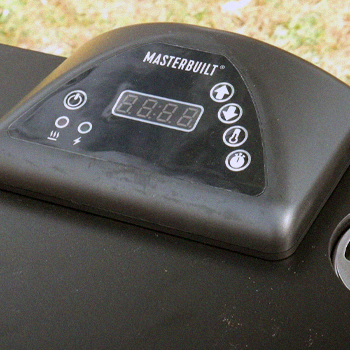
While it may be quite straightforward, smoked fresh ham definitely takes time. So, if you want to be efficient, it’d be a good idea to preheat your smoker while you prep.
If you’re using a charcoal smoker, light your charcoals and place them in the smoker’s rack.
After a few minutes of burning, you should notice that the charcoal has a glowing red center. This means you can add your soaked wood chunks to the smoker.
You should let the heat rise and wait for the smoke to achieve a blueness in color - this gives a clean smoke flavor [3].
When preparing smoked hams, you’ll want the smoker to run at 225 degrees Fahrenheit. You can check the temperature using a digital thermometer.
Step 2: Prepping the Green Ham
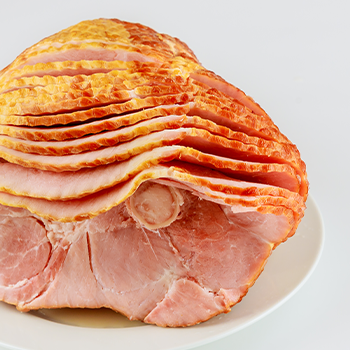
While you wait for your smoker to reach 225 degrees Fahrenheit, you can begin prepping your fresh raw ham.
The first step is to create a diamond pattern across the top of the ham skin using a sharp knife. Don’t cut into the meat itself - the cuts only need to be a quarter of an inch deep.
The reason we do this is to ensure we get a crispy outside when smoking our ham. Making these slits also allows the rub to penetrate the meat.
Seasoning is where the yellow mustard comes into play.
You’ll want to coat the whole uncooked hams with a light layer of mustard. If you don’t like the taste of mustard, don’t worry. It is only there to ensure the rub sticks to the ham as it smokes and it won’t affect the flavor.
“If I had to narrow my choice of meats down to one for the rest of my life, I am quite certain that meat would be pork.”
- James Beard's Theory and Practice of Good Cooking
After you do so, you’ll want to apply a good amount of rub to your ham. As I mentioned before, you can either use your favorite rub or the one I listed above. Ensure the ham is evenly coated and that you don’t miss the insides of the diamond cut.
The next and optional step of preparing your whole fresh ham is to inject it. If you choose to do this step, you’ll notice your ham is a lot more tender and light in flavor than it is without. If you prefer a more smoky flavor, you may want to skip the injection.
Presuming you choose to inject the ham, you’ll want to grab a saucepan and mix the ingredients above. Place the heat on low and bring the ingredients to a boil. Ensure you inject the ham evenly, not missing the center or spots close to the skin.
Allow the ham to cool after injecting.
Step 3: Placing the Ham in the Smoker
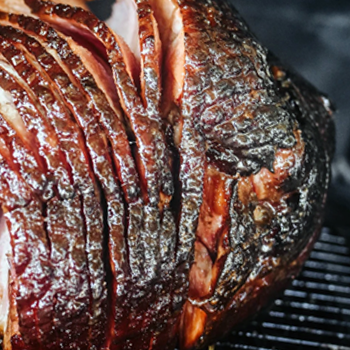
Once your ham has been seasoned with spice rub and the smoker has reached an internal temperature of 225 degrees Fahrenheit, it’s time to place the ham inside the smoker.
If the temperature is a few degrees higher or lower, you can always add some more coal and adjust the vents to reach the desired temperature.
The wood chips can be added when necessary to keep the smoke flow going.
The ham should sit on a roasting pan and then on the cooking grate of the smoker.
The size of your ham will determine how the ham cooks. Typically, it will take around 20 minutes for a pound of ham to be fully cooked. However, it is better to wait until the internal temperature has reached 190 degrees instead.
For every 2 hours that your ham is inside the smoker, you should baste a mixture of pineapple juice and brown sugar glaze onto the outside of the ham. This will give your cooked ham a caramelized crust and a delicious flavor.
When your ham has reached an internal temperature of 160 degrees, you’ll want to remove the ham and wrap it loosely with aluminum foil. You can also add a pinch of freshly ground black pepper if you wish.
Leave the foil open at the ends to allow the smoke to penetrate the meat.
Place the ham back in the smoker and remove it once it has reached an internal temperature of 190 degrees Fahrenheit.
As is with every smoking adventure, you should avoid opening and closing the smoker unless you have to. Every time the door opens, you’re letting vital temperature escape, which in turn affects the smoking process.
Step 4: Letting the Smoked Ham Rest
Once your ham is smoked, you must let your ham sit for 30 minutes. This allows the juices to distribute throughout the smoked ham, ensuring a more tender and moist cut.
Also Read: How Long Can Ham Sit Out?
References:
- https://pubmed.ncbi.nlm.nih.gov/26621069/
- https://meat.tamu.edu/ansc-307-honors/meat-curing/
- https://www.oklahomajoes.com/how-tos/monitor-your-smoke


